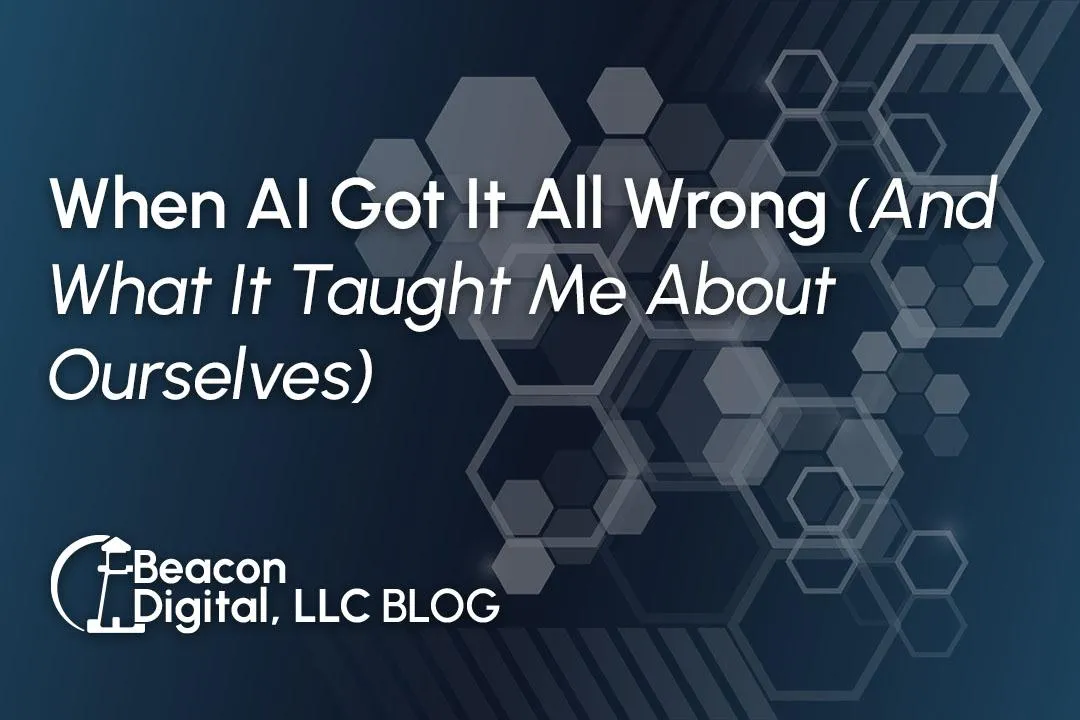
When AI Got It All Wrong (And What It Taught Me About Ourselves)
The other night, my son showed me a meme he thought was hilarious. I, on the other hand, didn’t get it.
He tried his best to explain — in his wonderfully unique, autistic way of connecting thoughts that make perfect sense to him — but I still couldn’t piece it together.
So, I did what a lot of people do when they’re stumped these days: I asked AI.
I uploaded the meme into ChatGPT — a photo of hard drives in four quadrants, each in a slightly different position, labeled “Data Loss.”
ChatGPT confidently told me it showed “hard drives going in for a kiss,” and that one fell over, symbolizing “loss.”
Not even close.
The meme was actually a parody of a 2008 webcomic called Loss, a surprisingly serious moment in the usually lighthearted gaming comic Ctrl+Alt+Del. In it, the main character rushes into a hospital to find out his partner has suffered a miscarriage.
It became infamous online. Over the years, people began recreating it in ridiculous ways — stick figures, Lego sets, even geometric shapes — using the same four-panel layout to poke fun at its melodrama. The “Data Loss” meme was one of those parodies.
So why did AI completely miss the joke?
That question sent me down a rabbit hole — and what I found said a lot about both AI and us.
Why AI Hallucinates (And What That Really Means)
Here’s the truth: AI doesn’t understand. It predicts.
Large Language Models like ChatGPT aren’t built to know things; they’re built to guess what word or phrase should come next based on patterns from billions of examples.
So, when you ask it to explain something obscure — like a meme parodying a decades-old comic about miscarriage — it fills in the blanks with whatever seems most likely from its training data, even if that means making something up.
AI wants to give you an answer. Any answer.
That’s why it struggles with niche topics, rare references, or anything too far outside the norm. When the data runs out, it improvises — and sometimes, it creates entire stories from thin air.
It’s not lying. It’s just guessing with confidence. And sometimes, it sounds so sure that we forget it doesn’t actually know anything.
Why Humor Trips It Up
Humor is where AI really hits a wall.
Comedy relies on timing, surprise, and shared experience — all things that come naturally to people but not to algorithms.
A meme like “Data Loss” lands because it connects two wildly different ideas — a tragic comic and computer hard drives — into one clever cultural wink. Humans instantly get that dual meaning because we live in context. AI doesn’t.
Trying to get a machine to explain that is like asking a calculator to understand sarcasm.
The Bigger Lesson: Use the Right Tools for the Right Jobs
That little experiment reminded me of something important: tools only help when we use them for what they’re built to do.
AI is amazing for what’s predictable — rewriting copy, organizing data, filling gaps, and speeding up repetitive tasks. It can brainstorm ideas and spark creativity faster than we ever could alone.
But the magic — the emotion, humor, intuition, and nuance — that’s all human.
AI can imitate, but we can imagine.
AI can analyze, but we can empathize.
AI can predict, but we can surprise.
As more people lean on AI to write, design, and create, our humanness will become our greatest advantage.
The Real Takeaway
AI didn’t just get the meme wrong — it reminded me how vital it is to stay curious and think for ourselves.
The danger isn’t that AI hallucinates; it’s that we might stop questioning what it tells us. The real risk is forgetting how to think critically, laugh unexpectedly, and make connections only a human could make.
So next time AI gets it wrong, take it as a gentle reminder. Don’t dismiss the tool — just sharpen your own instincts.
Because in a world racing toward automation, the most valuable thing you can bring to the table… is still your humanity.
Ok, I'm sure you want to see the meme now.




